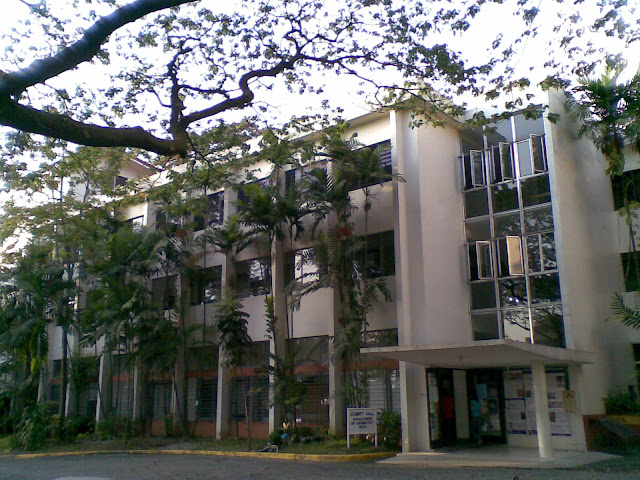Inequity in Education in the Philippines
To state that there is currently a great inequity in education in the Philippines is accurate. Sadly, my alma mater, Ateneo de Manila University stands as a glaring testament to this gross bias. While 90 percent of families in the Philippines can be considered low-income, one obviously will not find 90 percent of the students enrolled in Ateneo coming from poor families. Poor basic education in both elementary and high school prevents a lot from even entering college. To make matters worse, unlike in the United States, elite universities such as the Ateneo have campuses for both elementary and high school. In the Philippines, catering to the priviliged therefore starts very early.
Below is a socioeconomic classification of the Philippines in 2009.
Michele Schweisfurth and coworkers write in Developmental Leadership in the Philippines: Educational Experiences, Institutions and Networks:
 |
| Schmitt Hall, home of the Department of Chemistry, where I spent most of my time during college, above photo copied from the Ateneo de Manila website |
Below is a socioeconomic classification of the Philippines in 2009.
 |
| Above copied from 1985-2009 Family Income Distribution in the Philippines presented in SWS |
Michele Schweisfurth and coworkers write in Developmental Leadership in the Philippines: Educational Experiences, Institutions and Networks:
Vertical differentiation is particularly pertinent to the issue of access, and shapes the educational and life chances of individual Filipinos as well as setting the parameters for who is likely to have the kind of education that places key roles in governance within their reach... ...the system is highly stratified with acute status and quality differences. These status differences are very well understood in the Philippines and both the advantages of attending elite institutions and the non-meritocratic normal routes of access were noted... ... “Here in the Philippines we have first, second and third class universities.”Inequity in education needs to be addressed. This is vital to a country's progress and development. Favoring privileged students of course helps preserve an oligarchy but it also prevents the realization of talent and potential among the country's population. Studies are clear: Where there is inequity, there is no excellence. Ming Ming Chiu and Lawrence Khoo write in Effects of Resources, Inequality, and Privilege Bias on Achievement: Country, School, and Student Level Analyses:
...Students in countries with higher inequality, clustering of privileged students, or unequal distribution of certified teachers typically had lower scores. Distribution inequality favored privileged students, in that schools with more privileged students typically had more resources. Overall, students scored lower when parent job status had a larger effect on student performance (privileged student bias) in a school or country. These results suggest that equal opportunity is linked to higher overall student achievement....
Comments
Post a Comment